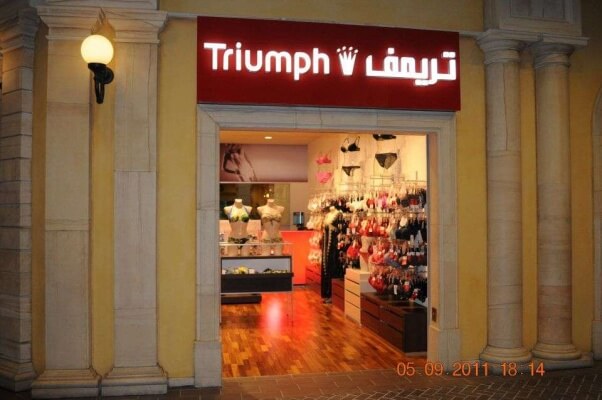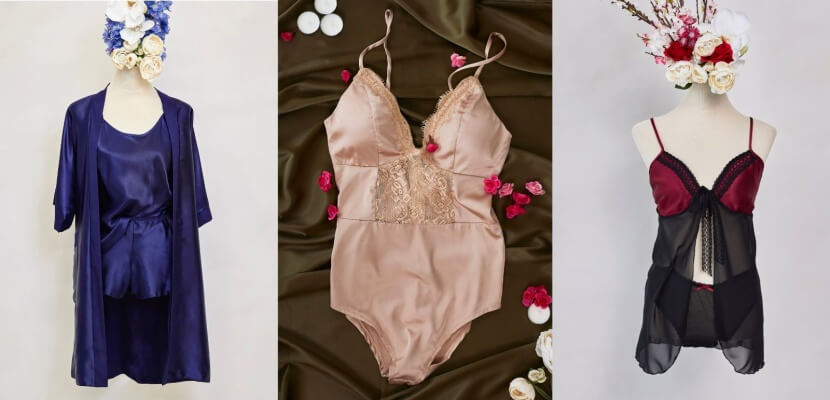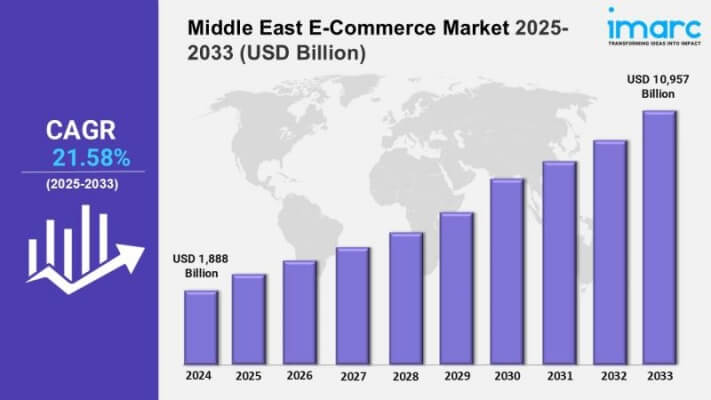Middle East Lingerie Spotlight: Trends, Tastes & Opportunities in Intimate Apparel?
The Middle East lingerie market is booming, yet many manufacturers struggle to understand the unique blend of modesty and luxury that defines this region. Are you missing out on this $1.7 billion opportunity?
The Middle East lingerie market reached $1.7 billion in 2024 and is expected to grow to $3.3 billion by 2033, with a CAGR of 7.5%. This growth is driven by increasing online shopping platforms, the body positivity movement, and rising demand for personalized lingerie that balances modesty with contemporary style.

I've been in the lingerie manufacturing business for over 15 years, and I've seen firsthand how the Middle Eastern market has evolved. When we first started exporting to GCC countries, we made countless mistakes by not understanding the cultural nuances. Today, I want to share what we've learned about this fascinating market that blends tradition with modern fashion sensibilities.
What Makes the Middle East Lingerie Market Unique?
The Middle East lingerie market is a study in contrasts. While public dress codes may be conservative in many countries, private intimate wear often embraces luxury, sensuality, and bold designs. How can brands navigate this complex landscape?
The Middle East lingerie market is characterized by its dual nature: modest public appearance paired with luxurious private intimate wear. Consumers seek high-quality fabrics like silk and lace, vibrant colors, and intricate embellishments, while also valuing discretion in packaging and shopping experiences.

When I visited Dubai for a fashion exhibition last year, I was amazed by the sophistication of the lingerie retail environment. The stores were elegant, private, and offered personalized shopping experiences. One retailer told me that her customers often spend more on a single lingerie set than European customers might spend on an entire seasonal wardrobe. This insight completely changed our approach to product development for this market.
The Middle East lingerie market is not monolithic - it varies significantly across countries and regions. In the UAE and Saudi Arabia, luxury brands dominate, while in other markets, there's growing demand for affordable yet stylish options. At HAVING, we've developed specific product lines for different countries based on these preferences:
| Country | Preferred Styles | Color Preferences | Price Sensitivity |
|---|---|---|---|
| UAE | Luxury sets, embellished pieces | Bold colors, gold accents | Low - premium pricing accepted |
| Saudi Arabia | Modest-luxury hybrid, bridal sets | White, red, black with embellishments | Medium - quality-focused |
| Qatar | Designer brands, exclusive collections | Jewel tones, metallics | Very low - ultra-premium focus |
| Egypt | Practical yet stylish, bridal | Traditional colors, subtle designs | High - value-oriented |
How Does Culture Influence Lingerie Design in the Middle East?
Cultural and religious factors play a significant role in shaping lingerie preferences in the Middle East. But what exactly are these influences, and how do they translate into product design?
Middle Eastern lingerie design is influenced by Islamic principles of modesty and privacy, yet embraces luxury and sensuality for intimate settings. This creates a unique market where packaging is discreet, shopping experiences are private, and products feature modest external appearance but luxurious details for personal use.

I remember when we first entered the Saudi Arabian market, we made the mistake of using our standard European packaging with visible product images. Our distributor quickly educated us on the importance of discreet packaging that respects local sensibilities. Now, our Middle East collections feature elegant, unmarked outer packaging with the beautiful product presentation reserved for the inside.
The concept of modesty in the Middle East doesn't necessarily mean plain or boring designs. Instead, it creates an interesting dichotomy where public modesty contrasts with private luxury. This has led to fascinating design innovations in our product lines:
The Modesty-Luxury Balance in Middle Eastern Lingerie
Middle Eastern consumers often seek lingerie that balances modesty with luxury in unique ways. For example, our best-selling items in the region include:
-
Modest-coverage pieces with luxurious details - Chemises and babydolls with higher necklines but made from premium silks and adorned with hand-sewn embellishments
-
Bridal collections with cultural significance - White and red lingerie sets that incorporate traditional symbols and designs meaningful in Islamic culture
-
Practical pieces with hidden luxury elements - Everyday bras with modest external appearance but featuring luxurious inner linings and details visible only to the wearer
At HAVING, we've developed a specialized design approach for our Middle Eastern collections that we call "Modest Luxury" - where the external appearance respects cultural norms while the details, fabric quality, and craftsmanship deliver the luxury experience our customers desire.
What Are the Current Trends in Middle Eastern Lingerie?
The Middle East lingerie market is evolving rapidly, with several key trends emerging in recent years. What are these trends, and how can brands capitalize on them?
Current trends in Middle Eastern lingerie include the rise of modest-luxury fusion designs, increased demand for personalized and tailor-made pieces, growing interest in sustainable and ethical production, and the emergence of local brands that understand regional preferences. Online shopping is also transforming how consumers discover and purchase intimate apparel.

During my recent visit to our Dubai showroom, I noticed a significant shift in customer preferences. Five years ago, international luxury brands dominated the market. Today, there's growing interest in pieces that reflect local cultural elements while maintaining international quality standards. This has inspired our design team to collaborate with Middle Eastern artists to create exclusive prints and embellishments that resonate with local customers.
Key Trend Categories in the Middle East Lingerie Market
| Trend Category | Description | Growth Rate |
|---|---|---|
| Modest-Luxury Fusion | Designs that blend modest coverage with luxury materials and details | +15% annually |
| Personalized Lingerie | Custom-made pieces with personalized elements and perfect fit | +22% annually |
| Sustainable Production | Eco-friendly materials and ethical manufacturing processes | +18% annually |
| Local Brand Growth | Emergence of Middle Eastern lingerie brands with cultural authenticity | +25% annually |
| Online Shopping | Discreet e-commerce platforms with private delivery options | +30% annually |
The online shopping trend is particularly interesting. While e-commerce for lingerie faces unique challenges in the Middle East due to privacy concerns, specialized platforms that offer discreet packaging and delivery are seeing tremendous growth. At HAVING, we've partnered with several regional e-commerce platforms to ensure our products are available through these trusted channels.
How Can Brands Successfully Enter the Middle Eastern Lingerie Market?
Entering the Middle East lingerie market requires careful planning and cultural sensitivity. What strategies can help brands succeed in this unique environment?
Successful entry into the Middle Eastern lingerie market requires understanding local cultural norms, developing appropriate marketing strategies, creating discreet shopping experiences, and building relationships with local partners who understand the market. Brands must balance international appeal with cultural sensitivity.

When we first expanded to the Middle East, we made the critical decision to partner with local distributors rather than trying to go it alone. These partnerships provided invaluable insights into customer preferences and helped us navigate the complex regulatory environment. For example, our Saudi Arabian partner advised us on appropriate marketing imagery that would be both effective and culturally acceptable.
Market Entry Strategy Framework for the Middle East
Based on our experience at HAVING, I recommend a four-phase approach to entering the Middle Eastern lingerie market:
Phase 1: Market Research and Cultural Understanding
- Conduct in-depth research on specific country preferences
- Study religious and cultural factors affecting lingerie choices
- Analyze successful competitors and their adaptation strategies
Phase 2: Product Adaptation and Development
- Modify existing product lines to suit local preferences
- Develop market-specific collections with appropriate features
- Create culturally sensitive packaging and presentation
Phase 3: Distribution and Partnership Building
- Identify and establish relationships with trusted local partners
- Develop appropriate retail strategies (online vs. physical stores)
- Create discreet and comfortable shopping experiences
Phase 4: Culturally Sensitive Marketing
- Develop marketing materials that respect local norms
- Utilize appropriate channels for promotion
- Build brand reputation through quality and cultural understanding
At HAVING, we've found that investing time in understanding the cultural nuances of each market has paid dividends. For example, our specialized bridal lingerie collection for Saudi Arabia, which incorporates traditional elements while maintaining our signature quality, has become one of our most successful product lines in the region.
What Are the Challenges and Opportunities in the Middle Eastern Lingerie Market?
Like any market, the Middle East presents both challenges and opportunities for lingerie brands. What are these, and how can brands navigate them effectively?
The Middle Eastern lingerie market presents challenges including navigating cultural sensitivities, understanding diverse regional preferences, and adapting to complex regulatory environments. Opportunities include the growing premium segment, increasing online sales, and rising demand for personalized experiences that blend tradition with contemporary fashion.

One of the biggest challenges we faced at HAVING was understanding the subtle differences between countries that outsiders often view as homogeneous. For example, the UAE market is significantly more international and open to Western styles than Saudi Arabia, while Qatar has an extremely high-end luxury segment that demands exclusive designs and materials.
Key Challenges and Opportunities
| Challenges | Opportunities |
|---|---|
| Cultural sensitivity in design and marketing | Growing premium segment with high spending power |
| Diverse regional preferences requiring market-specific approaches | Increasing acceptance of online shopping with discreet delivery |
| Complex regulatory environments that vary by country | Rising demand for personalized and custom-made lingerie |
| Competition from established international luxury brands | Emerging modest-luxury fusion category with limited competition |
| Need for discreet packaging and shopping experiences | Growing interest in sustainable and ethically produced lingerie |
At HAVING, we've turned these challenges into opportunities by developing specialized expertise in the region. Our design team now includes Middle Eastern designers who bring authentic cultural understanding to our collections. We've also invested in discreet packaging solutions and private shopping experiences that make our customers comfortable.
Conclusion
The Middle Eastern lingerie market offers tremendous opportunities for brands that take the time to understand its unique characteristics. By balancing cultural sensitivity with innovation and quality, manufacturers can tap into this growing market successfully.
Frequently Asked Questions (FAQ)
Is lingerie popular in Middle Eastern countries?
Yes, lingerie is very popular in Middle Eastern countries, particularly for special occasions like weddings. While public dress may be modest, private intimate wear often embraces luxury and sensuality, creating a thriving market for high-quality lingerie.
What colors are preferred in Middle Eastern lingerie?
Color preferences vary by country and occasion. Bridal lingerie often features white, red, and gold. Everyday lingerie spans the full color spectrum, with particular appreciation for jewel tones, metallics, and black with gold embellishments.
How important is modest design in Middle Eastern lingerie?
The concept of modesty in Middle Eastern lingerie is nuanced. While public-facing aspects like packaging and marketing require modesty, the actual products often embrace luxury and sensuality for private settings. The key is understanding when and where modesty is required.
Are online lingerie sales growing in the Middle East?
Yes, online lingerie sales are growing rapidly in the Middle East, with an estimated annual growth rate of 30%. This growth is supported by specialized platforms that offer discreet packaging, private delivery options, and secure payment methods.
How do Middle Eastern consumers prefer to shop for lingerie?
Shopping preferences vary by country and individual comfort levels. Many consumers prefer private shopping experiences in boutiques with female-only staff. Others are increasingly comfortable with online shopping that offers discretion. The common factor is a desire for privacy and personalized service.
